






Welcome to the first issue of Sketch, a new publication from Allermuir and Senator.
Sketch is a forum to showcase new ideas, trends, opinions and products from both Allermuir and Senator. Two completely different brands but with one vision to create innovative products for the workplace.
In each edition we'll take a creative look at all the different ways we all work, and suggest ideas, improvements, small hacks, big changes, all to help inspire you.
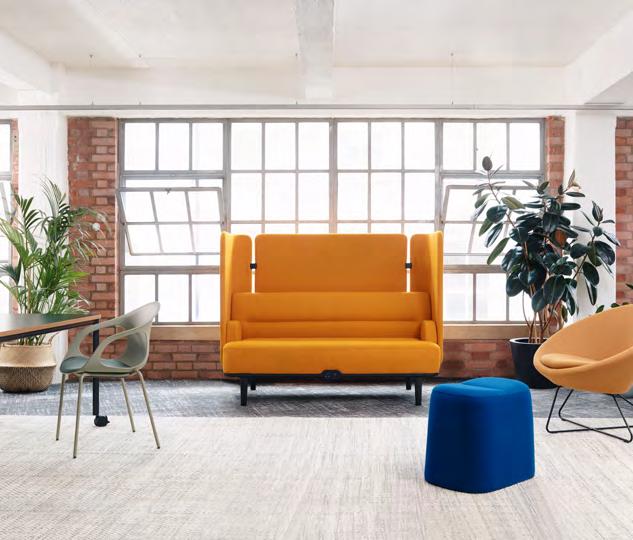


The role of the workplace is currently being discussed in more detail, and depth, than ever before.
As humans the way we interact with physical furniture, engages with our senses. It’s one of the few objects — other than our clothes — that we’re in physical contact with, for large amounts of time, making furniture such an important presence in our daily lives.
We’re surrounded by it, making our relationship between the arrangement in which we use it, and the shape in which we fashion it, so integral.
As well as playing a functional part, furniture can affect our daily mood and behaviour. Meaning specific pieces can reduce distraction or increase focus and stimulate our creativity.
Over the recent month’s our lives have been transformed, our working patterns have changed, and it’s highlighted more than ever the need for furniture to work at — whether that’s a desk or a sofa.
Every workplace is largely defined by the furniture that’s within it. Is it still fit for purpose? Does it suit the way you work? Does it suit the cultural shift in attitude towards flexible or hybrid working?
The role of the workplace, more than ever, is about having a space to collaborate, a space to discuss ideas, stimulate creativity, learn and to socialize. One way to approach this is by asking, what does your workplace have to offer? Is it a place that reinforces your organizations culture? Is it the place that champions social interaction? Is it the place that reflects new working routines and cultures?
Improving workplace furniture isn’t the quickest, it isn’t the easiest, but it is the most cost-effective way to transform, not just your workspace but more importantly your working culture.
As we transition from the traditional fixed desk office into a more open, collaborative, and informal, working style, so to have our everyday working requirements.
Play is a solution that enables users to store, divide, meet, and work, in anyway they deem fit in that moment.







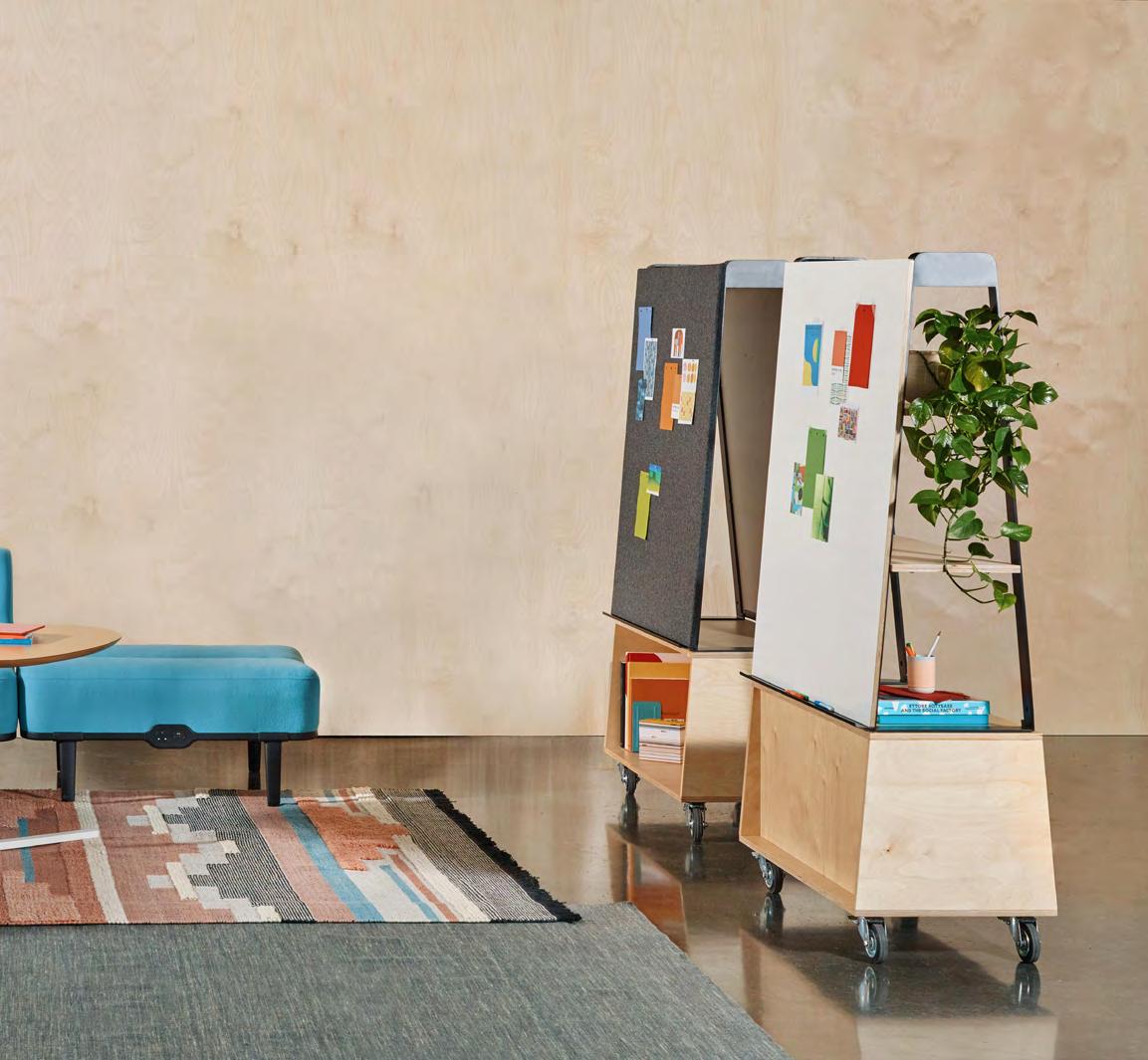

Play

is a range full of endless opportunities and possibilities that can be uniquely configurated time and time again to suit the demands of your space.

Play Tables, Play Storage, Play Screens


get creat�ve
Stop. Collaborate and configure.
We've put together five settings that can allow you to create your own collaborative nooks, inspirational hotspots or creative brainstorming settings. With each setting utilising the Play collection in its own way.
The Hotdesk setup combines an elegant static Pailo desk, with the addition of a gantry to create open or private space. Pailo is paired with a mobile Play desk, Circo and Roam. These simple additions create a much more fluid and flexible environment suited for quick work sprints or social working.



The Briefing setup combines Sholes Chairs, Play Mobile Presentation Units and Play Storage together to create a space in which users can come together for an informal presentation, impromptu demonstration or ad-hoc meeting.



The Classroom uses the multifunctionality of Play to help provide an education and training focused set up. In this setting we have combined Play Screens with Play Tables and a Play Whiteboard to provide an agile and adaptable working space.

Downloadable Play Settings

The Lounge setting puts a focus on relaxation and impromptu working. Combining the privacy and comfort of Mote with the agility and adaptability of Play Tables, we have created a casual set up that accomodates both collaborative working and solo work.




The Brainstorm setting utilizes the round Play Table and Play Screens to create a private and agile space which is ideal for team collaboration and idea generation. The addition of Mote and Roam Stools only help to add to the agility of this setup.


In a post COVID working environment we need products that offer not just privacy but proximity, and yet retaining the social and open qualities of our modern open plan offices and workspaces.
Mote was designed to react on demand to dynamic working environments; versatile, reconfigurable spaces for meeting, learning, focusing, or relaxing.
Built around a series of modules, a corner seat (90° and 120°), a single seat with backrest, sofa, and ottoman.
The single seat and sofa have the option to include screens. The screens are upholstered in a rigid, cushioned fabric to reduce acoustics in open plan offices.
Meet at open Mote configurations that use sofas and ottomans to maintain a sense of community. Perfect for when you need somewhere to break out, meet up with your team or have a quick catch up, Mote can be configured in infinite ways to suit your size, space and needs.
Or retreat to more private and peaceful settings. Mote uses additional screens and canopies to give you, your team and your conversations some privacy.
Created as a complete lounge seating range, no detail is an afterthought, with every inch having been given careful consideration to eliminate dead space.
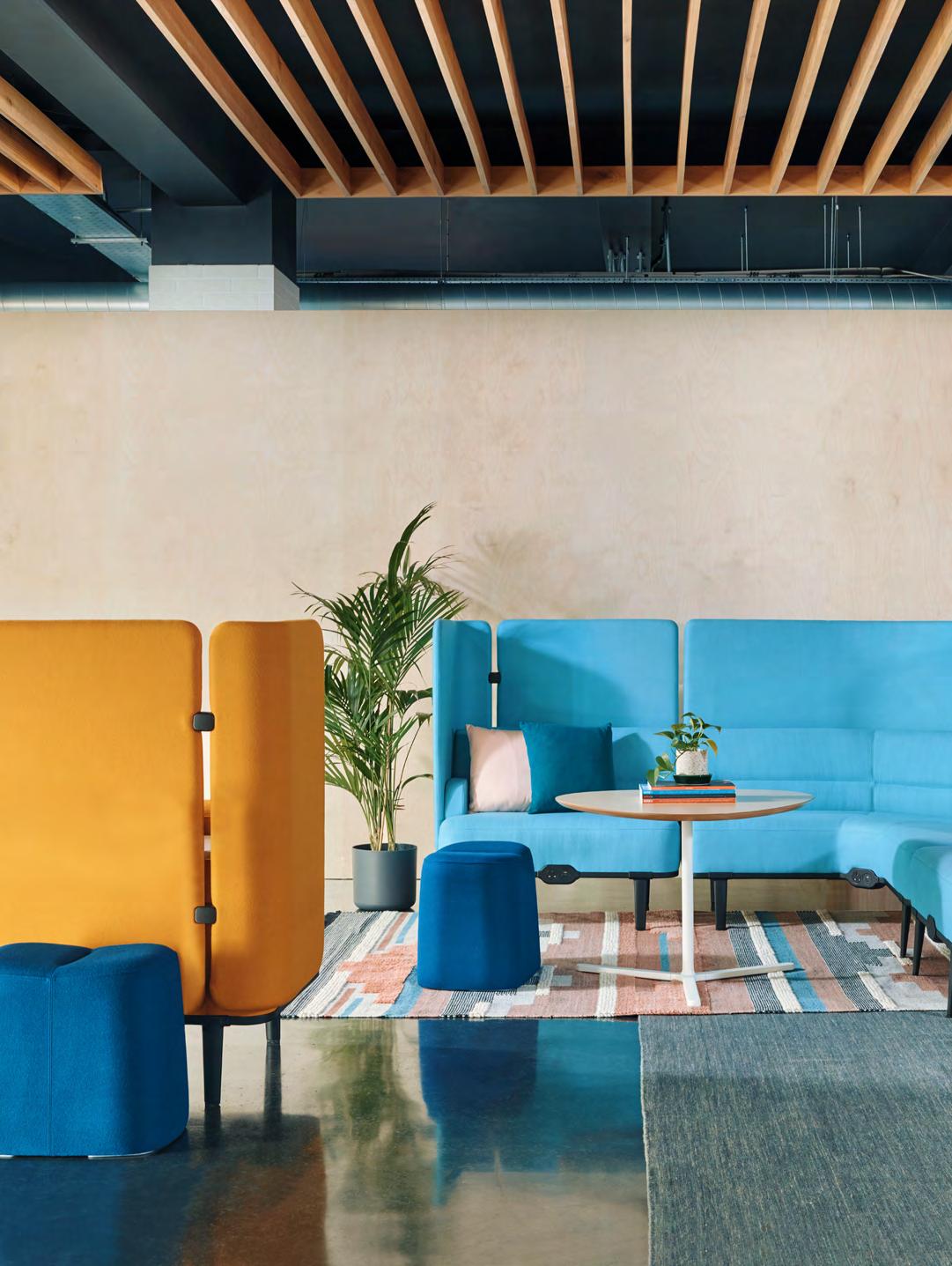
Configuration One
Large, overhead canopies help to add even more peace and quiet to your retreat or private meeting.
Configuration contains:
— MTE-BSF20C

— TAL22SR
Configuration Two
This simple setting gives up to four users the option of a private place to work alone or to get together and meet as a group.
Configuration contains:






— MTE-BSF02
— ALP2010RC
Configuration Three
This setting encourages users to be open to conversation and informal meetings by utilising portable stools and ottomans.
Configuration contains:
— MTE-SF90
— MTE-SF01
— MTE-OT01
— MTE-FST
— TAL21LST
Configuration Four
Another statement configuration that uses both sides of the sofas to feel approachable from any angle.
Configuration contains:



— MTE-SF120
— MTE-SF01
— MTE-OT01
— MTE-FST
— TAL21SST Download
Configuration Five Configuration Six
A small setting which utilizes 120 degree Sofas to create an initmate meeting area ideal for a catchup or brainstorm.
Configuration contains:
— MTE-SF120
— PYPMPUDW
— ALP15RD
This configuration allows users to dock at a casual work setting where they can work solo or as a team.



Configuration contains:

— MTE-OT03
— PYPMPUDW
— PYPT0616RC

— TAL41LST

A larger configuration that allows a small team to have a peaceful and uninterrupted meeting.
Configuration contains:
— MTE-BSS90
— MTE-BSS01
— MTE-BCSR01

A media focused layout that allows users to present, relax and analyze using the private Mote sofa and Play Media Unit.
Configuration contains:


— MTE-BSF120


— PYPT0616RCH
— PYP12-8-DR
— PYP18-8-DR
— PYP18-16-MU
— ALP15RD
— TAL21LST Download Configuration Here Download Configuration Here



Mote can respond to the demands of a dynamic working environment; versatile, reconfigurable spaces for meeting, learning, focusing, or relaxing.

�n Conversat�on
You have been a long-standing friend of Allermuir with early designs like Tommo and Haven remaining fresh and relevant today. What attracted you to furniture design and how do you approach the design process?
MG Thank you. I am pleased you see me as a friend. I remember enjoying my woodworking classes at school and I still have a coffee table I made when I was 15 which looks strangely contemporary even now… I felt it was decent enough to be included in an exhibition ‘Making Designers’ at CDW back in 2013 to highlight the importance of teaching Design and Technology in schools. But it was to be another 15 years before I revisited the world of design having worked in advertising in the interim. So I was 30 when I started out on my furniture journey, initially training as an apprentice with various cabinet making workshops before starting out on my own as a designer maker in the early 90’s. It was not until 2001 that I stopped making with all my fingers still attached, to concentrate solely on the design alone. Furniture design really is all I ever wanted to do…
I think I am hard wired this way and it is an integral part of what makes me tick. I sometimes wonder how it would have turned out had I followed this path initially but perhaps it is best not to dwell on the what ifs in a life.
The design process does not get any easier... if anything it gets harder and I now understand that this is because I put greater pressure on myself to create work that is genuinely worth doing… that is better in some way and justifies its creation. I seem to have raised my own bar. Sometimes the gods are looking down favourable on you in which case an idea emerges quickly but in most situations it is a case of working… and reworking and repeat. And I am very lucky to have in the team two exceptionally talented designers in Sandro and Onni who keep me on my toes.
What is the best piece of advice design or otherwise that you have ever been given?
MG Identify and understand the questions you need to ask yourself before you start designing… what are you really trying to solve through the design process?
What new materials and technologies interest you the most right now?
MG Well on the one hand I am interested to see how craft can humanise highly mechanised industrial processes and on the other, I am intrigued by the possibilities those same processes have to take what was craft to another level.
Into which space would you most like to place an Allermuir piece?
MG The space where it would not have been 5 years ago. By this I mean the brand has grown in stature so much that it deserves to up there with the best.
Besides design, what are you really passionate about?
MG Bees, whites, detail, Keith Vaughan, habitat conservation, Arsenal.
What do you think the most significant developments in furniture/product design have been in the last few years?
MG Does the world really need another chair? It seems we are eventually understanding that the way forward is to design better, make for longevity and consume with discernment. I was worried a few years ago that we were heading rather fast down the furniture as fashion blind alley. That it was somehow acceptable to discard last season’s sofa in that blue. But even the fashion industry appears to be getting it and embracing the concept of responsible manufacturing and the concept that a brand can and should facilitate the longevity of a product. The idea that the initial purchase of a chair from a company is the start of a long term relationship with that same company who will repair and renovate the same chair in 20 years’ time and who will ultimately recycle all its components. The idea that a chair is most relevant when it is going to last.


What makes you excited about Mondays?
MG It means Sunday is over. I have always disliked Sundays.
Is there any artists, designers or architects from the past that have influenced you or that you particularly appreciate the work of?
MG Dieter Rams obviously. He was there before I could even walk. I also have a very soft spot for Antonio Citterio as there is no one better at finding perfect proportion than he.
And, well to be very honest, when I was starting out, I would drive by SCP on my way to the workshops in Dalston, and see the work of Jasper Morrison, Terence Woodgate and Matthew Hilton and just be slightly overwhelmed by their talent.
In your opinion, what kind of design is good design?
MG I know it when I see it and I sense it when I might even have created it. When the visual and functional narrative tells the right story. When it makes you feel better when you use it. When it has genuine worth. Golly.

Crate Divide gives you the option to create zones that give you privacy, a place to meet, a place to store, a place that is mobile and a place which is unique to you.
A cube based modular system that allows you to create spaces intuitively








Crop is a family of outdoor chairs and stool designed by Benjamin Hubert of LAYER for Allermuir. The collection takes its name from the enigmatic rolling fields of British crops in the countryside, which are represented in the flowing parallel wires of the seating forms.
CROP was 12 months in development and is a response to the fast growth of outdoor dining and hospitality, which has been driven by social distancing needs in the midst of a pandemic.
LAYER and Allermuir believe this growth will continue in a post pandemic world, driven by a newfound appreciation of al fresco dining and socialising.
Each product in the range is crafted from a steel rod frame with slim, robot-welded wires forming the seats and backrests. The flowing curves of the seats and backrests mimic the pillowed shape of soft seating, offering comfort that echoes the gently curvaceous visual language. The CROP arm and side chairs stack four high to allow for ease of transport and storage in both residential and commercial settings.
A new range of outdoor seating inspired by the rolling fields of British crops.
�ntroduc�ng CROP

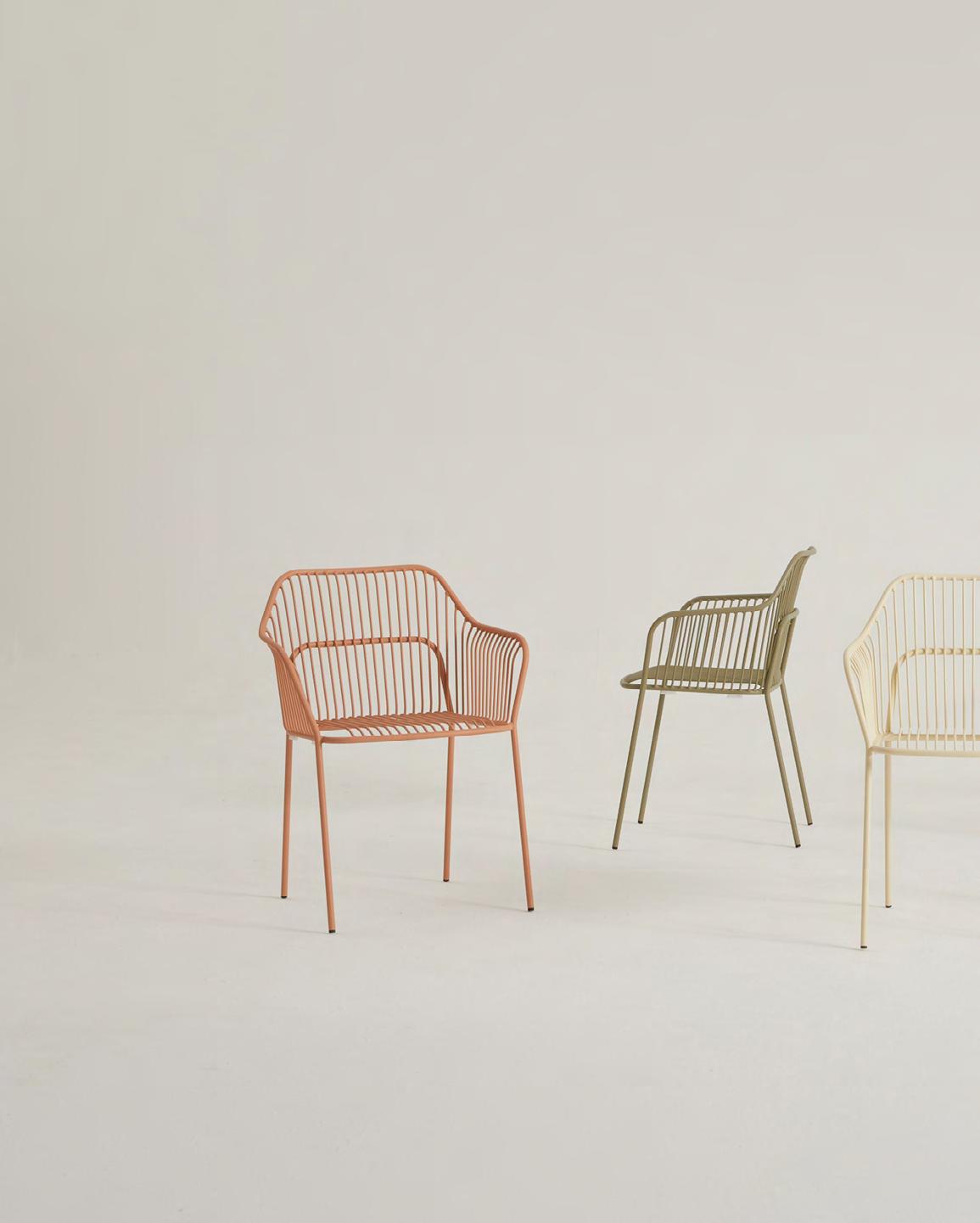

CROP is robust but light-hearted and presented in a vibrant, considered colour palette ready to embrace outdoor living whether that be in a private garden, a pavement café or in larger volumes in hotels, bars and restaurants.


i-Workchair 2.0 Coming Soon.

Showcase your homeworking style.
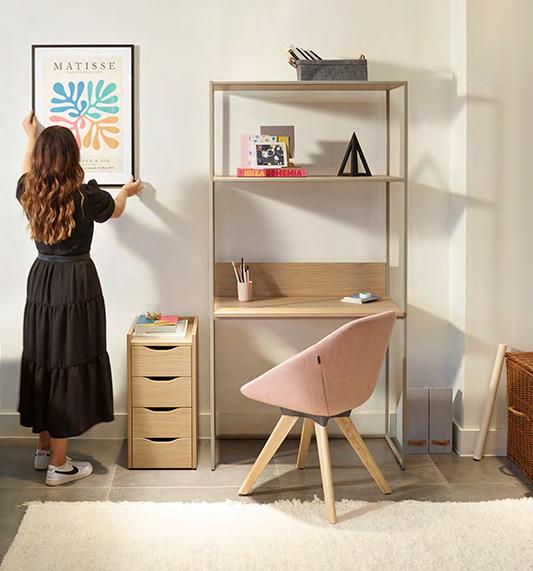
In the next issue of Sketch we will be taking a look at:

The carefully curated colourways of i-Workchair 2.0



Plus much more...
 Qdos
Allermuir | Senator Homeworking.
Inspired by teals, aquas and cool clay tones from the drift of extreme landscapes. This calming palette evokes balance and stability. The colourway is ego-free, seasonless, genderless and ageless.
Qdos
Allermuir | Senator Homeworking.
Inspired by teals, aquas and cool clay tones from the drift of extreme landscapes. This calming palette evokes balance and stability. The colourway is ego-free, seasonless, genderless and ageless.
Issue Downloads
You can view and download all of the settings in this issue of Sketch here.
Where to find us
Global Headquarters Altham Business Park, Accrington, Lancashire BB5 5YE
Corporate Headquarters 4111 N. Jerome Road Maumee, Ohio 43537
Join the conversation
thesenatorgroup.com allermuir.com allermuirhome.com
Instagram @senator_social @allermuir @allermuirhome
What is Sketch
Sketch is a forum to showcase new ideas, trends, opinions and products from both the Allermuir and Senator brands. Two completely different brands but with one same vision to create innovative products for the workplace.
The Allermuir and Senator brands are part of the The Senator Group

